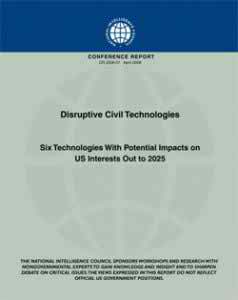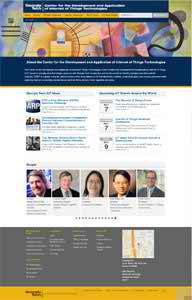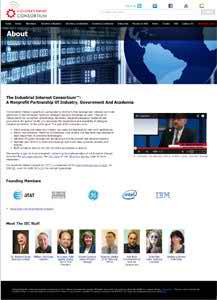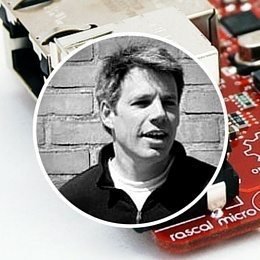The Internet of Things (IoT), perhaps best summarized as the integration of any “thing” and “process” into the communications space, is progressively penetrating the daily reality.
While still in its infancy, it invites countless and legitimate debates about the “invasion of data snatchers”, the dislocation of business models, the disappearing jobs due to technological innovation increasingly relying on automation, the lack of related skills and expertise, and more broadly its social impact.
IoT is indeed bound to generate economic and social friction, including the clash of status quo with not- as-usual business; the collision between creative and out-of-focus imagination; and the asphyxiation from old world ideas versus geographically-agnostic unbridled innovation.
Pundits, market observers and industry players are divided over the transformational capabilities of IoT technologies and the ubiquitous connectivity it ushers in. However, there is much less of a disagreement regarding the accompanying transitional challenges.
Social friction erupts from erosion of privacy, and concerns about ethics, security and trust. Economic friction is evident both in industrial and emerging markets whenever automation shrinks the demand for unskilled labor and creates a negative impact on the economy and society as a whole. At the same time, the preparedness of both businesses and the workforce is called into question.

Security, privacy, trust and ethics have quickly risen to the top of the policy agenda in the European Union and the United States. As early as 2008, the US National Intelligence Council had identified the Internet of Things as one of six potentially disruptive technologies: “Popular demand combined with technology advances could drive widespread diffusion of an Internet of Things (IoT) that could, like the present Internet, contribute invaluably to our economy. But to the extent that everyday objects become information-security risks, the IoT could distribute those risks far more widely than the Internet has to date.”
In 2010, European Commissioner for Digital Agenda Neelie Kroes in a speech at the second annual conference on IoT in Brussels was equally emphatic about the stakes:
“the Internet of Things is about values and fundamental democratic choices on the future of our society.”
“Technological unemployment” is rightfully a source of concern and must be addressed in a broad macroeconomic context (see for example The Economist’s recent article on “The Onrushing Wave”). Erik Brynjolfsson and Andrew McAfee, at MIT’s Center for Digital Business, in two recent books (Race against the Machine and The Second Machine Age) paint a sober but nonetheless optimistic view of the transition to a more automated society. Note that their optimism is not naïve. They recognize the magnitude and seriousness of the issues at hand and that policy changes must take place. However, while the second machine age will take decades to play out, and “the twists and disruptions will not always be easy to navigate,” at the end, Brynjolfsson and McAfee expect “our world will prosper on the digital frontier.”
IoT-centered companies need to re-think the way they articulate their business, internally and externally as competition will give way to “co-opetition”. In parallel, current and future workforce must be educated and trained to tackle effectively and efficiently the IoT challenges. Surveys (see for instance Cisco’s and SAP and Harris’ in 2013) repeatedly show that the lack of expertise is a serious impediment to IoT adoption.
The arrival of things (as in “anything”) in the communications space will change forever the way we interact both in our personal and professional lives.
As a case in point, the industrial Internet, a foundational element for accelerating IoT, is already profoundly transforming the critical industries that “power, move and treat the world.” Says Jeff Immelt, Chairman and CEO of GE, “in the near future, I expect nothing short of an open, global fabric of highly intelligent machines that connect, communicate and cooperate with us. This Industrial Internet is not about a world run by robots, it is about combining the world’s best technologies to solve our biggest challenges. It’s about economically and environmentally sustainable energy, curing the incurable diseases, and preparing our infrastructure and cities for the next 100 years.”
UK Prime Minister David Cameron echoed this view at the recent CeBIT 2014 trade fair in Hannover, Germany
I see the Internet of Things as a huge transformative development – a way of boosting productivity, of keeping us healthier, making transport more efficient, reducing energy needs, tackling climate change.
By definition, any revolution tears down the fabric woven by history to establish novel and promising ways of doing things. Change can be painful for the unprepared, and a bounty of opportunity for the wise. Therefore, it is crucial that an ecosystem be developed (and encouraged to exist) to facilitate, as smoothly as possible, i.e., without (or limited) friction, the impeding and ineluctable societal metamorphosis brought about by the Internet of Things.
In February 2013, the BCS – Chartered Institute for IT (UK) and the Oxford Internet Institute (OII) jointly held a seminar on the “social impact of the Internet of Things”. Its main conclusions were that:
- 1) there needs to be more research on real applications, in order to inform policy and practice
- 2) there needs to be multi-stakeholder involvement in the early design stages of IoT applications and systems
- 3) there needs to be greater public understanding and discussion of the technology, its potential benefits, and related issues and challenges
In the United States, several initiatives throughout industry and academia have been developed to address the above objectives and leverage the next generation of advances in the Internet of Things, Industrial Internet, and the exciting possibilities yet to be unleashed by Cyberphysical Systems (CPS).


Among several recent examples, the Industrial Internet Consortium (IIC)with strong backing from market-leading companies and the Georgia Institute of Technology’s Center for the Development and Application of Internet of Things Technologies (CDAIT) aim at shaping the “cyber future” in a way that yields tangible benefits for both the builders and users of the Internet of Things.
This article represents the views and opinions of the authors and does not necessarily represent those of any company, organization or institution to which they may be affiliated.





